Getting Plants Ready to Come Indoors
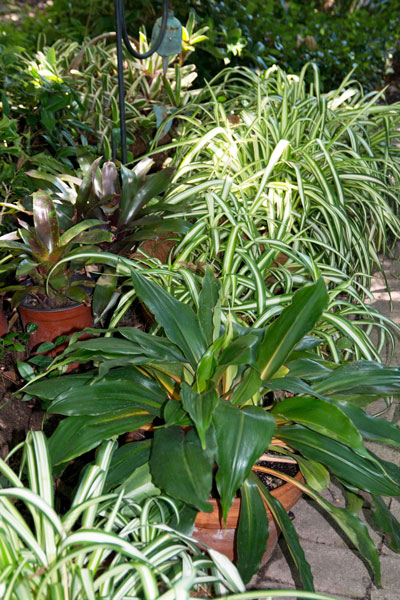
Photo: Every gardener accumulates tropical plants over a summertime. It’s time to start deciding how best we can save them this winter.
What are the steps you need to take to bring plants indoors for the winter, and to give yourself the best possible chance that they will thrive once they’re in? Here is your checklist.
Which plants are the most critical? Which are most valuable to you? Which would be most difficult to replace? Space near bright windows is usually limited. Only you can make these decisions. A plant given to you 20 years ago by your grandma is obviously much more critical than the pot of wandering Jew you bought at the grocery last spring.
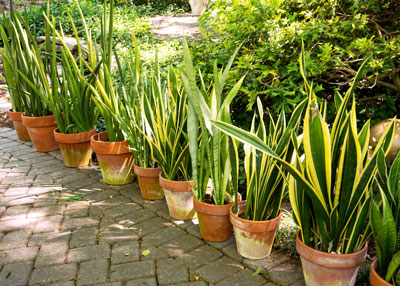
Photo: I collect sansevierias, so you know they’re going to come indoors for the winter.
How much cold can each type tolerate before you must bring it inside? It’s usually best to assume that all tropical plants can be hurt by temperatures of 40 degrees or below. Killing frost can occur on clear, still nights at temperatures well above freezing. Some plants such as dieffenbachias, hibiscus, bougainvilleas, aglaonemas and others suffer “chill” injury at temperatures below 45 or 50 degrees, so they need to come in earlier.
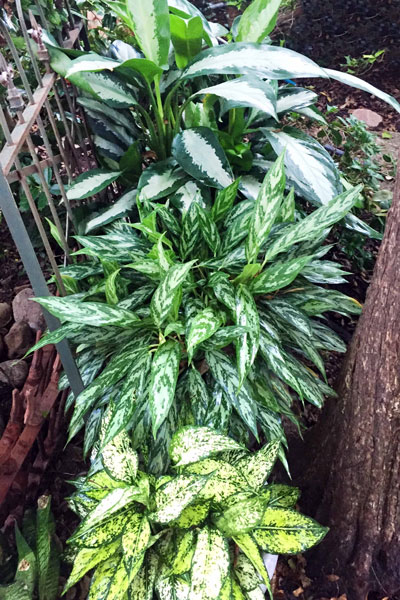
Photo: I love aglaonemas, and I use them outdoors over the summer to provide color and interest in dark spots in our gardens. But they won’t handle cold, so these will be coming indoors within the next several weeks.
What are the brightest parts of your house? Sunrooms are best. East, south or west windows work well, but only if there are no evergreen trees or large shrubs outside, and if you don’t have blinds or drapes that are drawn. Indoor light is generally only 10 or 15 percent the intensity of outside light, even in shaded areas outdoors. Garages are basically out of the question. They’re too cold and too dark.
Are the plants properly shaped? If not, trim them as needed.
Are there any pests on the plants that need to be eliminated before you bring them inside? Remember that there aren’t many natural predators inside your house, so it’s best to get rid of insects before you transition the plants in. Identify the pests you see. Ask your Texas Certified Nursery Professional to confirm your ID, and ask that he or she show you the best available means of controlling them.
Check inside the bottoms of the pots, too. It’s not uncommon for roaches, pillbugs and ants to invade through the drain holes. If you find any, submerge the pot in a tub of water overnight to eliminate them.
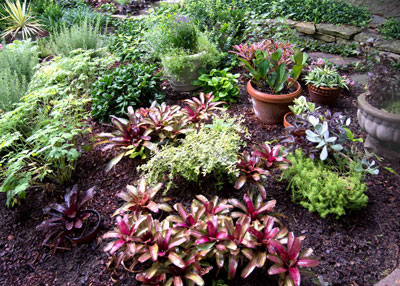
Photo: I’ve been using bromeliads for color in what might have been flowerbeds. I sink their pots flush with the soil. Before they come inside my house or greenhouse, I check them for scale and other insects.
When was the last time you fed your patio container plants? If it’s been within the past two or three weeks, you may not need to do any more for this season. Your main goal, as you maintain plants in your home, will be to keep them healthy and full, not to encourage vigorous growth.
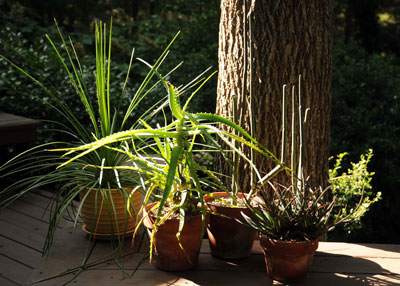
Photo: The sun’s rays are dropping low in the autumn sky. That’s evidence that it’s time to get these succulents from my collection back to the greenhouse. I may keep one or two in a bright window indoors.
